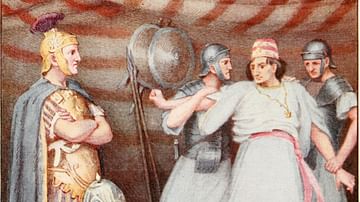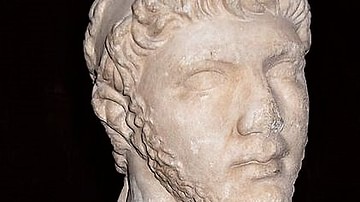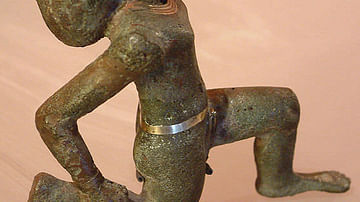When the Numidian king Massinissa (c.241-148) died, the people of Dougga (or: Thugga) decided to build a monument in his honour. A bilingual inscription (RIL 2, KAI 101) says the building was erected in the tenth reign year of his successor Micipsa (139/8 BC). One part of the inscription was written in Punic. The other part looks like a series of geometrical shapes (strokes, circles, dots and the like). This lesser known type of writing, which was already mentioned by Fulgentius the Mythographer and Corippus in antiquity (Chaker), is usually called the 'Libyan' alphabet. Archaeologists have uncovered more than a thousand 'Libyan' inscriptions throughout Northern Africa.
Unfortunately, the Massinissa text is not very representative of the whole collection. There are but a few bilingual (Libyan-Punic or Libyan-Latin) texts to be studied upon. In addition, most documents are very short: "here lies X". To make things worse, the 'Libyan' alphabet comes in a number of variants (mostly containing some 23 symbols), while it is far from sure that one and the same symbol has the same sound value everywhere. Even the dating of many texts raises problems. So, only a part of this set of inscriptions (the 'oriental' part) can be deciphered with reasonable certainty.
Obviously, modern scholars are curious to know what ancient language goes with this type of writing. (Perhaps one should even say: what languages, for little is known with certainty.) It is tempting to hypothesize that these 'Libyan' inscriptions were actually written in some ancient form of Berber (or some supposed predecessor). After all, the Berbers are known to have inhabited the region for quite a long time. Moreover, their language (that is, the set of mutually unintelligible 'Berber' or 'Tamazight' dialects) seems to have originated in Northern Africa itself, unlike the 'imported' languages Punic, Latin, Arabic and French. Some ancient variety of the Berber language may well have been spoken in antiquity already, for the set of Berber dialects constitutes a separate branch of the so-called Afro-Asiatic Note language family (just like the set of Semitic languages or ancient Egyptian, for instance).
There is even more reason to guess that 'Libyan' was in fact (some kind of) Berber. Tuareg people (i.e. nomadic Berber tribes living in Southern Algeria and adjacent countries) traditionally use to exchange short and friendly messages in exactly that sort of alphabet, which they call Tifinagh Note (which is presumably derived from 'Punic' (sc. letters)). As a matter of fact, it is widely believed that the well-known Punic consonantal alphabet served as a 'model' for the Libyan writings of Antiquity. And, moreover, modern scholars (like Werner Pichler) tend to speak of "Libyco-berber script", meaning 'Libyan' and/or Tifinagh writings.
But one cannot be too cautious. The existence of a "Libyco-berber script" doesn't necessarily imply a Libyco-berber linguistic continuity. In the first place, Berber was not recorded before the Middle Ages. So, in the best case, one has to resort to non-attested, reconstructed words and expressions instead of 'real' Berber, and it is questionable whether those reconstructions reflect the actual language situation of Roman age Mauretania and/or Numidia. (Compare, for example, Robert Kerr's (2010:21-22) scepticism and methodological criticism with Salem Chaker's moderate optimism.) Nevertheless, the idea that MSNSN GLDT W GJJ reflects something like 'Massinissa the king (Tashelhit Berber: agellid), son of (TB: u) Gaia', is exciting.
Abbreviations
KAI = Donner, H. & W. Röllig (1962-4): Kanaanäische und aramäische Inschriften (3 volumes). Wiesbaden: Harrassowitz.
RIL = Chabot, J.-B. (1940): Recueil des inscriptions libyques. Paris, Imprimerie nationale.






